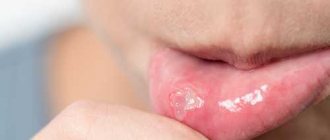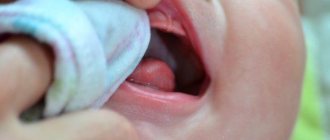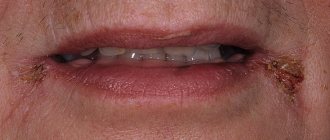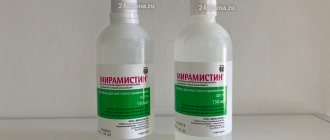What helps well with stomatitis?
July 5, 2022
2270
5
2
Content
- Why does stomatitis occur?
- Who most often gets stomatitis?
- Types of stomatitis
- Symptoms of stomatitis
- How to treat stomatitis?
- The best remedies for treating stomatitis
- Holisal
- Stomatidin
- Kamistad gel
- Hexoral Tabs
- Lidocaine Asept
- Solcoseryl dental adhesive paste
- Metrogil Denta
With stomatitis, the mucous membrane of the mouth becomes inflamed. Typically, stomatitis occurs in children due to poor hygiene (dirty hands in mouth, dirty objects). Stomatitis can be either an independent disease or appear against the background of dental problems, mechanical damage to the mucous membrane, or infections. Stomatitis looks like mouth ulcers or large inflammations. Stomatitis is completely curable if you consult a doctor in time and start therapy immediately.
Geksoral's analogs
Before you buy an analogue of Hexoral, you need to read the instructions. In most cases, those drugs that are advertised as milder and safer are not much different from Hexoral. For example, Tantum Verde is often recommended as a gentle analogue, although these remedies are very similar in effectiveness and side effects. However, Tantum Verde is not an absolute analogue, since its effectiveness is due to the action of benzydiamine. In case of overdose, this substance provokes ketonuria and laryngospasm.
Despite the fact that Tantum Verde is positioned as safe for children, it should not be used by patients under 3 years of age. The advantage of this drug is low allergenicity due to the absence of essential oils in the composition. Tantum Verde is produced in the form of a spray, so it is more gentle, and side effects are observed very rarely.
It is often recommended to replace Hexoral tablets with Grammidin. This is a domestic drug that is effective in treating throat diseases. However, it contains an antibiotic, so it cannot be considered a direct analogue of Hexoral.
You can often come across the opinion that IRS-19 spray is an absolute analogue of Hexoral. But the first remedy is indicated for sore throat and diseases of the oral cavity, and the second is effective in the midst of an epidemic of viral infection.
Geksoral's analogues:
- Stomatidin. A combined agent that has antiseptic, analgesic and anti-inflammatory effects. The active ingredient is hexetidine. Indicated for infectious and fungal infections, as well as injuries to the oral cavity and pharynx. Not prescribed for atrophic pharyngitis, children under 4 years of age and pregnant women (1st trimester).
- Maxisspray. An antiseptic drug prescribed for acute pharyngitis, tonsillitis, stomatitis and gingivitis. Contraindicated for children under 8 years of age and for pregnant women (1st trimester).
- Stopangin. Complex anti-inflammatory and antimicrobial drug based on hexetidine.
For any disease of the oral cavity, you cannot get by solely with Hexoral or some other drug. Treatment of such pathologies must be comprehensive. Only an otolaryngologist who is able to assess all the risks and benefits of such therapy can prescribe the drug. Often, for stomatitis in children, doctors prescribe milder drugs that do not cause side effects, unlike the potent Hexoral.
The shelf life of the medicine is 2 years (for tablets 3 years). The average cost of Hexoral solution is 150 rubles, tablets – 100 rubles, aerosol – 17 rubles.
Sources used:
- Rational pharmacotherapy in dentistry. — M.: Litterra
- Medicines in dentistry. Directory / L.N. Maksimovskaya, P.I. Roshchina. — M.: Medicine
- The use of non-steroidal anti-inflammatory drugs for the treatment of dental diseases / S.T. Sokhov et al. - M.: MEDpress-inform, 2011.
- Material from Wikipedia
Why does stomatitis occur?
There are many causes of stomatitis, including:
- diseases of the gastrointestinal tract and oral cavity;
- conditions after chemotherapy;
- burns from hot food, injuries to the oral mucosa and gums;
- lack of vitamins and unbalanced diet;
- as a “side effect” against the background of cancer;
- as a consequence of hormonal problems;
- smoking and alcohol abuse;
- oral infections;
- some chronic diseases;
- lack of necessary oral hygiene;
- long-term use of certain medications.
Who most often gets stomatitis?
- Children under 7 years old. About half of preschoolers experience stomatitis at least once due to lack of the habit of washing their hands frequently.
- Elderly people with chronic diseases and dental problems.
- People who have a weakened immune system after illness, chemotherapy or organ transplantation.
- Those who live in unsanitary conditions or do not observe personal hygiene rules.
- Smokers, regardless of length of service.
- People after a long course of antibiotics.
- People who have asthma and use inhalers but do not use them properly.
According to statistics, the frequency of cases of stomatitis is lower in large cities, and higher in villages.
Overdose
When the solution is swallowed, vomiting often occurs, which helps to get rid of toxic substances. That is why an overdose of Hexoral rarely occurs. If a large amount of the product gets into the stomach, you need to rinse it. If a child has swallowed a lot of Hexoral, rinsing is vital, since due to the high concentration of ethyl alcohol, the baby may experience severe alcohol poisoning.
Caution should also be exercised when using tablets and lozenges. Despite the pleasant taste and relative safety, Hexoral in tablet form is a medicine. Even lollipops cannot be used if you have a severe allergy to the components.
In case of overdose, benzocaine, which is part of Hexoral lozenges, can cause tremors, convulsions, vomiting and breathing problems. Sometimes patients' heart rate slows down, and in severe cases, atrioventricular block and even cardiac arrest occur.
Types of stomatitis
Stomatitis can be of infectious or non-infectious origin (it all depends on the reasons that caused the inflammation).
Viral stomatitis.
This stomatitis occurs against the background of an infectious disease or due to pathogenic microorganisms. Bubbles with a clear liquid appear on the oral mucosa, which gradually becomes cloudy. When these blisters burst, ulcers appear.
Bacterial stomatitis.
Occurs due to damage to the body by streptococci or staphylococci. Pathogenic microflora quickly spreads throughout the oral mucosa, where purulent ulcers appear.
Fungal stomatitis.
With this stomatitis, ulcers with a white coating form on the oral mucosa.
Radiation stomatitis.
It occurs against the background of ionizing radiation and looks like painful erosions and thickening on the oral mucosa.
Chemical stomatitis.
Occurs after chemical burns of the mucous membrane. When the wounds heal, dense scars remain.
Aphthous stomatitis.
This is one of the most common stomatitis and occurs against the background of reduced immunity and problems with the gastrointestinal tract. Painful wounds up to 5 mm appear in the mouth, which quickly increase in size.
Allergic stomatitis.
Such stomatitis occurs against the background of external irritants and goes away without treatment if provoking factors are removed (medicines, incorrectly selected dentures, certain foods).
How to use Hexoral for stomatitis
Hexoral is most effective for herpetic and fungal stomatitis. In addition to stomatitis, Hexoral helps with laryngitis, pharyngitis, tonsillopharyngitis, purulent sore throat, colds and fungal infections. It must be remembered that any drug is fully effective only when it is used in accordance with the instructions.
If a solution was prescribed for the treatment of ulcers, treatment should be carried out twice a day after meals. You need to moisten a cotton swab with the solution and apply it to the affected area for 30 seconds. When using an aerosol, spray within two seconds. It is important not to swallow saliva for a while after the procedure.
The duration of the therapeutic course is determined only by the doctor, taking into account the severity of the disease. Hexoral is not used as monotherapy. Stomatitis can only be cured in a comprehensive way: diet, bed rest, drugs that strengthen the immune system.
How to treat stomatitis?
If you consult a doctor at the first symptoms of stomatitis, treatment will be symptomatic and will last about a week. If it turns out that stomatitis is caused by an infection, its treatment will be as follows:
- anti-inflammatory drug (plus for other main symptoms);
- ointments and gels for local treatment;
- drugs to destroy the causative agent of the disease.
Drugs for the treatment of infectious stomatitis may include antibiotics, painkillers, antiseptics, and antiallergic agents. Typically, such stomatitis is treated for about 10 days. If it turns out that stomatitis is a secondary problem against the background of any chronic disease, treatment will be aimed at eliminating the underlying disease.
To speed up the process of treating stomatitis, the following additional measures are used:
- avoidance of foods that may irritate the mucous membranes;
- introduction of fermented milk products into the diet;
- rinsing the mouth with a decoction of calendula and chamomile;
- treating wounds in the mouth with aloe juice or sea buckthorn oil.
A doctor must monitor the treatment of stomatitis in order, if necessary, to adjust the course in time and prevent “side effects”.
Holisal
The undoubted advantage of this gel for stomatitis is that it lasts the longest after application. The main active ingredient of Cholisala is salicylate. It instantly penetrates the affected area, relieves inflammation and has an antipyretic effect. "Cholisal" only slightly anesthetizes, in this regard it is significantly inferior to similar drugs. Stomatitis gel perfectly fights pathogenic microorganisms, is well applied to the mucous membrane and stays on it for a long time. The effect of the Cholisal gel after application lasts about eight hours. The product has a sweetish taste, it is colorless, economical in use and suitable for adults and children. "Cholisal" has no allergic reactions or side effects. The only contraindication for this drug for stomatitis is individual intolerance.
Holisal
Pharmaceutical plant Elfa A.O., Poland
For local use on the mucous membranes of the oral cavity as an analgesic and anti-inflammatory agent in the treatment of periodontal diseases, damage to the mucous membrane, diseases that occur with an inflammatory reaction and pain: - stomatitis of various etiologies;
- gingivitis; - periodontitis; - damage to the oral mucosa when wearing dentures; - trauma to the oral mucosa; - pain during teething in children; - cheilitis; — candidiasis of the oral mucosa; — minor surgical interventions in the oral cavity; - lichen planus when localized on the oral mucosa; — damage to the oral mucosa in Stevens-Johnson syndrome (as part of complex therapy). from 204
5.0 6 reviews
1271
- Like
- Write a review
Release forms
Solution
The solution is sold in 200 ml bottles. Liquid Hexoral has a red tint and a pleasant mint aroma. The main part of the solution is ethyl alcohol, the rest: mint oil, essential oils (anise, cloves, eucalyptus), citric acid, levomenthol.
Hexoral solution is prescribed for rinsing with sore throat, stomatitis, pharyngitis and other inflammations of the oral cavity of a bacterial or fungal nature. The drug also helps to treat the throat and oral cavity after surgery.
Hexoral solution is intended for rinsing, irrigating and wetting the oral cavity. The drug has a local effect: eliminates cough, pain and discomfort, heals ulcers and wounds, relieves swelling of the mucous membrane. Only if you use it after meals can you achieve the maximum effect, since this way the product remains on the mucous membrane and acts until the next meal.
For rinsing with stomatitis, use an undiluted solution of Hexoral. It should be applied to the mucous membrane carefully using a cotton pad. The drug should not be swallowed. When treating stomatitis, two or three treatments per day after meals are sufficient. Before use, you need to clean your mouth.
If side effects occur during treatment, you should stop using the drug and consult your doctor. Under such circumstances, it is recommended to replace the medicine with analogues.
Aerosol
Aerosol (40 ml) Hexoral is colorless. The drug helps cope with pain and other symptoms of inflammation. The aerosol contains hexetidine, menthol, citric acid, essential oils (mint, eucalyptus).
Most often, the aerosol is prescribed for stomatitis in children. However, you need to remember that the spray is dangerous for very young children (under 3 years old), since its use can provoke laryngospasm. The medicine is applied to the affected mucous membrane with one or two injections.
Hexoral should not be swallowed, and therefore you should hold your breath when using the aerosol. If the product gets into the lungs, it can provoke bronchospasm.
It is noteworthy that Hexoral for spraying is an aerosol, not a spray. The difference between them is the size of the suspended particles, and then the aerosol has a more aggressive spray pattern. Therefore, if you do not hold your breath while spraying, you can provoke an attack of suffocation in patients prone to allergies.
Pills
The high effectiveness of Hexoral tablets is due to the activity of chlorhexidine and benzocaine. These substances destroy pathogenic microorganisms and reduce pain. Long-term therapy, including Hexoral tablets, can cause changes in taste perception and numbness of the mouth.
Tablets and lozenges are contraindicated in children under 6 years of age. Children over 12 years of age and adults can dissolve the drug 6-8 times a day (no more than a lozenge in two hours). If a doctor prescribes tablets for a child (over 4 years old), you should not take more than four tablets per day. If breastfeeding, you should first consult your doctor.
Stomatidin
"Stomatidin" is available in the form of a solution for stomatitis, but it is very easy to use. The aerosol is convenient for spot-treating mouth ulcers; it reduces inflammation and removes unpleasant odor if there are wounds with pus. It is convenient that the spray gets into all hard-to-reach places where there are inflammations and ulcers. Literally on the second day after using Stomatidin, the situation improves. The instructions say that the course of treatment for stomatitis with this solution is seven days. At this time, it is recommended not to eat spicy, salty or fried foods. "Stomatidin" has a sweetish taste. During the treatment of stomatitis with this drug, it is advisable to take immune-supporting agents. You can’t swallow “Stomatidin” - severe diarrhea is possible.
Stomatidin
Bosnalek, Bosnia and Herzegovina
- infectious and inflammatory diseases of the oral cavity and pharynx: tonsillitis (including tonsillitis with damage to the lateral ridges, Plaut-Vincent tonsillitis), pharyngitis, gingivitis, bleeding gums, periodontopathies, stomatitis, glossitis, aphthous ulcers to prevent superinfection;
- to prevent infection of the alveoli after tooth extraction; - fungal infections of the oral cavity and pharynx (especially candidal stomatitis); — before and after operations in the oral cavity and pharynx; — additional oral hygiene for general diseases; - in order to eliminate bad breath, especially in the case of decaying tumors of the oral cavity and pharynx. from 219
5.0 7 reviews
547
- Like
- Write a review
Hexoral during pregnancy
Doctors do not consider pregnancy a direct contraindication to the treatment of stomatitis with Hexoral. However, there are no reliable studies that would refute the danger of the drug for pregnant women and nursing mothers (WHO prohibits any studies involving such patients).
Since Hexoral has a local effect, it minimizes the effect on the fetus. In any case, treatment of stomatitis with this drug can only be carried out with the permission of the attending physician. Often, strong drugs, like Hexoral, are prescribed only when stomatitis poses a great threat to the child and mother.
Kamistad gel
“Kamistad gel” for stomatitis perfectly anesthetizes the mucous membrane with stomatitis and any damage in the mouth. The active ingredients of this product are lidocaine hydrochloride and chamomile flower extract. “Kamistad gel” helps to relieve pain and inflammation for a long time, and heals wounds on the mucous membrane. This drug is conveniently distributed, and the discomfort goes away almost immediately after application. If you strictly follow the instructions, there will be no adverse reactions. Before applying Kamistad Gel, the affected areas of the mucous membrane must be dried from saliva.
Kamistad-gel N
STADA Arzneimittel, Spain
The combined drug Kamistad gel N. Lidocaine has a local anesthetic effect, which helps to quickly and lastingly reduce pain due to inflammation and damage to the mucous membrane of the oral cavity and gums.
Chamomile flower extract has anti-inflammatory, antiseptic and regenerating properties. from 217
5.0 1 review
312
- Like
- Write a review
Hexoral Tabs
This drug for stomatitis contains chlorhexidine and an anesthetic, and instead of the anesthetic lidocaine, benzocaine. Additional ingredients are menthol and peppermint oil. Hexoral Tabs relieves pain and inflammation well, kills bacteria (although it does not have such a strong effect as specialized drugs against stomatitis). Benzocaine relieves pain instantly, although not for a long time. The product is very cooling due to the mint and menthol in the composition, so it may burn a little in the first seconds. But then the pills become sweet, and the pain in the mouth goes away. Hexoral Tabs is not prescribed as a separate remedy for the treatment of stomatitis - only in combination with other, stronger drugs.
Hexoral tabs
Pfizer (Pfizer), USA
Infectious and inflammatory diseases of the pharynx or oral cavity: - pharyngitis, sore throat and other inflammatory diseases of the pharynx;
- stomatitis; - gingivitis. from 99
5.0 1 review
357
- Like
- Write a review
Is it possible to take Hexoral for purulent sore throat?
Sore throat is an infectious disease caused by a bacterium called streptococcus. Streptococci are gram-positive bacteria that are susceptible to destruction by Hexoral. For purulent sore throat, local exposure to an antiseptic will not be a mistake; this will allow you to quickly restore the healthy state of the mucous membranes.
However, a sore throat, regardless of whether it is purulent or not, cannot be treated only with local drugs. Hexoral should act as an additional therapy, in combination with a systemic antibiotic. Delaying treatment and refusing to take antibacterial drugs orally can lead to complications from the cardiovascular system and the musculoskeletal system.
Lidocaine Asept
An excellent remedy for stomatitis pain relief, it is one of the most powerful. "Lidocaine Asept" blocks nerve impulses in tissues, affecting the cell membrane - the pain disappears in just a few seconds. Since the drug is too strong, it is not suitable for children. In addition to lidocaine, this product contains chlorhexidine to fight microbes - it destroys fungus, bacteria, and yeast. “Lidocaine Asept” for stomatitis is convenient to apply pointwise to painful areas of the mucous membrane - the drug does not “freeze” the entire mouth, but only those places where the product is applied.
Lidocaine Asept
JSC NPC "Biogen", Russia
Lidocaine-Asept spray for topical use has a local anesthetic and antiseptic effect and causes terminal anesthesia.
from 240
5.0 1 review
369
- Like
- Write a review
Solcoseryl dental adhesive paste
It is considered one of the best drugs for the treatment of stomatitis, improves tissue nutrition. The active substance of Solcoseryl ointment - hemodialysate - heals ulcers, wounds, abrasions and scratches. “Solcoseryl” well stimulates the regeneration processes of the oral mucosa, disinfects, and restores cells. But you need to take into account that Solcoseryl is not an antiseptic, so before applying this paste for stomatitis, you need to rinse your mouth, for example, with Chlorhexidine. The drug has no contraindications other than individual intolerance.
Solcoseryl dental adhesive paste
Meda Pharma, Switzerland
Wound healing, angioprotective, membrane stabilizing, regenerating, cytoprotective, antihypoxic drug, which is available in the form of an injection solution, gel and ointment for external use.
from 172
1.0 1 review
1183
- Like
- Write a review
Metrogil Denta
This stomatitis gel has a consistency similar to toothpaste, is easy to apply, and thanks to its unobtrusive mint taste, it does not cause rejection in children. Improvement in the situation with stomatitis occurs literally on the second or third day from the start of treatment with Metrogyl Denta. The drug relieves pain and destroys pathogenic microbes. The course of treatment with Metrogyl Denta is seven days; if there are no noticeable improvements, we recommend using a drug for stomatitis with a stronger effect. "Metrogil Denta" does not destroy beneficial lactobacilli, so the microflora of the oral cavity will not be disturbed. The drug has a long shelf life, so it is advisable to have it in your home medicine cabinet. At the initial stages of stomatitis in children, Metrogyl Denta is very effective.
Metrogil Denta
Principles of treatment of aphthous stomatitis for adults and children
- Combined (local and general) - aimed at all stages of pathogenesis (inflammation, restoration of the integrity of the mucous membrane).
- The diet is as gentle as possible chemically and mechanically with the exception of fried, sour, salty, spicy foods. Small meals 5-6 times a day, pureed food, small portions, warm.
- Antiseptics are used as rinses to prevent further infection of the oral cavity and the development of aphthous stomatitis, and to remove remnants of epithelial decay.
- Furacillin is a nitrofuran derivative, effective against most gram-positive and gram-negative microorganisms. Recipe for preparing the solution: dissolve a tablet (0.02) of furacillin in 100 ml of warm water.
- Chlorhexidine in the form of 0.1% or 0.05% solution for rinsing and irrigation.
In addition, antiseptics are used in the form of finished dosage forms: miramistin, stomatidine, ingalipt. Painkillers or anesthetics relieve pain from stomatitis, especially severe during eating. Therefore, they are prescribed before meals.
Lidocaine is convenient for use in the form of a gel or aerosol. The mechanism of analgesic action is based on blocking pain impulses in nerve endings. The aerosol is used in 2 doses every 1.5-2 hours, no more than 20 doses per day.
Hexoral spray is indicated for the treatment of aphthous stomatitis in adults. The action lasts up to 12 hours. Apply 2 times a day, morning and evening after meals.










